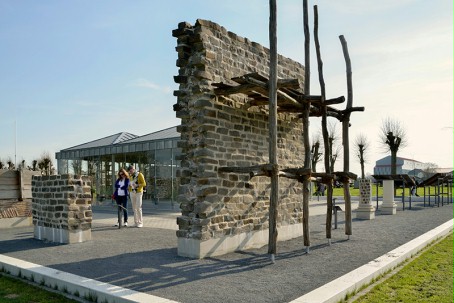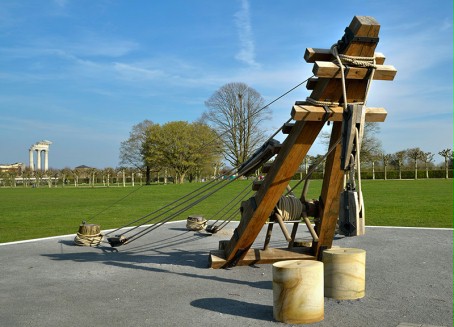Landschaftsverband Rheinland - Qualität für Menschen

LVR-Archäologischer Park Xanten
LVR-RömerMuseum

You are her: Archäologischer Park Xanten > Archaeological Park > Themed Pavilions > Construction and Techniques
Construction and Techniques
With their advance into northern Europe, the Romans brought design and construction techniques with stone and many other materials to the Lower Rhine. A pavilion with original monuments and descriptive models shows the amazing range of their craftsmanship.

The area outside the pavilion, with reconstructed stone walls and wooden scaffolding.
In the pavilion, there are impressive examples of stone architecture from the Roman city: the remains of columns, grave stones and architectural ornamentation, including precious marble from Egypt and Greece. Tables and graphs illustrate the origin of the finds.
Outside the pavilion, about 800 square metres are dedicated to how walls, roofs and floors were constructed out of various materials. Importing stone was expensive, so many inhabitants of the town built their houses out of rammed earth, mud brick or wattle and daub.

Model of a Roman construction crane in front of the pavilion.
It does not take an engineer to work out, by means of the exhibits, how the Romans used these building materials. High wooden scaffolding, ramming boxes for massive adobe walls, foundations on wooden piles and much more - they all demonstrate how many skilled construction workers there were in the Roman town. As well as different types of roofing, there are also mosaics and floor coverings to be seen. Not least, school groups on booked tours can try out a three metre high construction crane for themselves.

